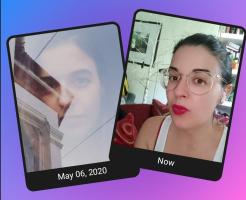Copy Link
Add to Bookmark
Report
Current Cities Volume 06 Number 10

_Current Cites_
Volume 6, no. 10
October 1995
The Library
University of California, Berkeley
Edited by Teri Andrews Rinne
ISSN: 1060-2356
http://sunsite.berkeley.edu/CurrentCites/1995/cc95.6.10.html
Contributors:
Campbell Crabtree, John Ober, Margaret Phillips,
David Rez, Richard Rinehart, Teri Rinne, Roy Tennant
Editor's Note: The Current Cites web site has moved to the
UC Berkeley Library's brand new SunSITE. Please change your
bookmarks accordingly. Web manager and senior cites
contributor Roy Tennant has taken this opportunity to
enhance our web site with a new design and retrospective
HTML mark-up for back issues. Check it out!
Electronic Publishing
Cronin, Blaise and Kara Overfelt. "E-Journals and Tenure"
Journal of the American Society for Information Science
46(9) (October 1995):700-703. -- A brief discussion
about the role of electronic publishing in the promotion
and tenure process for university scholars. Though it is
not yet clear whether the academic reward system is
embracing e-journals as criteria for advancement, it is
clear that a growing number of individual scholars and
administrators believe e-journals to be worthy of inclusion
in the review process. -- DR
DeLoughry, Thomas J. "Copyright in Cyberspace" Chronicle
of Higher Education 42(3) (September 15, 1995):A22, A24.
-- A report issued by the Commerce Department's Working
Group on Intellectual Property Rights
[http://www.uspto.gov/web/ipnii/] has recommended certain
changes to copyright law that would accommodate access to
information on the Internet. Librarians and educators have
expressed concern that the report is dominated by business
concerns favoring the rights of copyright owners over the
needs of academia. Many have also expressed concern over
the recommendation that network operators be held
responsible for copyright infringements; they fear that
those responsible for running networks would be required
to become "copyright police." -- MP
DeLoughry, Thomas J. "Panel Urges Saving Digital Data for
Posterity" Chronicle of Higher Education 42(2) (September
8, 1995):A31. -- The Commission on Preservation and Access
and the Research Libraries Group has created a task force
to investigate how best to insure continued access to
records stored in digital form. The report issued by this
task force calls on individuals and organizations interested
in digital archives to work together on developing standards
and mechanisms for moving digital materials into usable
formats; it also calls for cooperation between copyright
owners and archivists in determining who has access to the
archived materials. The report, which is still considered by
its authors to be in an interim stage is available at
http://www-rlg.stanford.edu/ArchTF/. -- MP
Multimedia and Hypermedia
Bearman, David, ed. _Hands On Hypermedia and Interactivity in
Museums_ (ISBN:1-885626-12-6) Pittsburgh: Archives & Museum
Informatics, 1995. -- This book is a publication of the papers
and articles presented at the Third International Conference on
Hypermedia & Interactivity in Museums. The diversity of issues
covered is great: from audiences and new technology, new media
in instruction and research, detailed case studies of multimedia
projects, to intellectual property and more. This book and its
companion volume, "Multimedia Computing and Museums"
(ISBN: 1-885626-11-8), raise issues that are of interest even
beyond museums, and will be fruitful reading for anyone in the
cultural heritage community. -- RR
Besser, Howard & Jennifer Trant. _Introduction to Imaging:
Issues in Constructing an Image Database_ (ISBN: 0-89236-361-4)
Los Angeles: Getty Art History Information Program, 1995.
[available at http://www.ahip.getty.edu/intro_imaging/home.html]
-- This booklet is a very readable and concise guide to the
process of imaging with the end-goal of using the images in
any type of image database for online display and delivery
over networks. It covers image standards, quality control,
techniques and more. The book will be of great use to the
manager or technical staff beginning an imaging project,
and contains a glossary of terms as well as a bibliography
for further reading. -- RR
Networks and Networking
Bournellis, Cynthia. "Internet '95" Internet World 6(11)
(November 1995):47-52. -- One of the most commonly asked
questions on the Internet relates to the "vital statistics"
of the net itself; that is, how many users, files, servers,
etc., can be found on this world wide network. Whether this
curiosity stems from a sense of awe at the phenomenal
growth the Internet has seen, or a desire to justify capital
outlays for Internet services, the urge to quantify is
clearly not going away anytime soon. In this article
Bournellis highlights some of the network surveys that have
been done to try and quantify what seems to be nearly
unquantifiable. URLs to key statistical sources are provided
as well so readers can keep up with the rapidly changing
statistical picture. -- RT
Chrzastowski, Tina E. "Do Workstations Work Too Well?:
An Investigation into Library Workstation Popularity and
the Principle of Least Effort" Journal of the American
Society for Information Science 46(8) (September 1995):
638-641.-- Chrzastowski looks at statistics taken from
library workstations at the Chemistry Library at the
University of Illinois at Urbana-Champaign that seem to
show a trend among users away from the more exhaustive
print indexes (in this case Chemical Abstracts) in favor
of the less comprehensive electronic indexes available
via the library workstation (Current Contents). -- DR
Green, Tim. "Online Information Services: Caught in the
Web?" Online 19(4) (July/August 1995):22-31. [available
at http://www.research.ibm.com/xw-library] -- Green
describes how online database providers such as Dialog,
Lexis-Nexis, STN International and others are using
the World Wide Web. Common uses include marketing,
product testing and limited free services. Screen shots
from most of the services mentioned are included. -- RT
Heaney, Michael. "Object-Oriented Cataloging" Information
Technology and Libraries 14(3) (September 1995):135-153.
-- Amidst an outcry from librarians to "catalog the
Internet" (as if that were possible), Heaney's article
appears to indicate that such an activity would be like
loading more people on the Titanic while it sinks beneath
their feet. Certainly many of the limitations and problems
with existing bibliographic standards like AACR2 and MARC
are well-known among librarians conversant with them, but
Heaney goes much farther than most would go in his attempt
to bring cataloging practice into the networked age. He
proposes an entirely new cataloging standard (AACR3 as it
were) based upon object-oriented modeling. He freely
acknowledges, however, that the sheer weight of existing
standards presents a formidable barrier to the drastic
changes that he proposes. Nonetheless it can be provocative
and informative to consider his proposal. -- RT
Lewis, Peter H. "Most Go On Line at Home, Study Finds"
New York Times 145(50,224) (October 23, 1995):C6. -- An
online survey conducted in mid-1995 by Yahoo, Inc. and
Jupiter Communications concludes that computer networks
have become a mass market medium faster than many insiders
had expected and suggests that most people access the Web
from home, not from the office or at school. A majority of
participants in the Yahoo survey said that they had cut
back on television watching in order to spend more time on
the Internet and many said they visited the Web or another
online service more than once a day. Meanwhile, other
surveys have found that nearly 14,000 new commercial online
service accounts are being opened each day with 9.9 million
Americans now subscribing to an online service, a 78 percent
increase from last year. -- MP
McMillan, Gary A., Margaret R. Dittemore, Carol Ritzen
Kem. "Internet Resources for Sociology" College &
Research Libraries News 56(9) (October 1995):639-643.
-- Another bibliography of selected Internet resources,
this month's C&RL News guide is designed to be a resource
for librarians introducing Internet resources in
sociology to faculty and students. It includes a list
of scholarly discussion lists and electronic conferences,
electronic journals, subdiscipline-related sites and
sources for finding information about grants and funding
sources. -- MP
Noack, David R. "Visiting Museums Virtually" Internet
World 6(10) (October 1995):86-91. -- Noack gives a virtual
tour through an incredible variety of online exhibits and
displays, ranging from dinosaurs to modern art. The article
includes pointers to Web servers, museum-related electronic
discussions, FTP sites, Gopher servers, and Telnet-accessible
databases. -- RT
Rinehart, Richard. "The Museum Information Access
Continuum" Spectra 23(1) (Fall 1995):28-29. [available
at http://www.uampfa.berkeley.edu/continuum.html]
-- Rinehart, a frequent contributor to Current Cites,
places museum digital access projects somewhere on a
continuum from stewardship to pedagogy. Stewardship leads
to "detail-rich" records of collection items in order to
better preserve and manage them, whereas pedagogy encourages
"context-rich" records to place collection items within "an
envelope of history or ideas." Rinehart asserts that neither
end of the spectrum should be preferred over the other --
both are required to fulfill the mission of most museums.
Rather he uses this context to help explain the complex
problems of providing online access to information spanning
the spectrum in a unified and easy to use way. -- RT
Robertson, Neil. "WWW: The Next Generation" Internet World
6(11) (November 1995):32-34. -- Tired of plain HTML? Have
you mastered forms and tables and are looking for the
next thrill? This article gives a brief look at several
cutting-edge Web technologies: Netscape server push and
client pull, the Virtual Reality Modeling Language (VRML)
and NCSA Mosaic's Common Client Interface. Essential URLs
are included. -- RT
Seabrook, John. "Home on the Net" The New Yorker (October
16, 1995):66-76. -- In this year's "home issue," the New
Yorker's technology writer John Seabrook
[http://www.levity.com/seabrook/] recounts the adventures
and mis-adventures of creating his own home page (get it?).
He provides a clear, simple description of the Web for
network novices while at the same time offering seasoned
Webmasters thought-provoking analysis of Internet culture
and how individual identity is manifested there. The
readability of Seabrook's insights make up for the
credibility he loses for not actually doing the mark up for
his own home page! -- MP
"Special Issue of Geographic Information Systems (GISs)
and Academic Libraries" The Journal of Academic
Librarianship 21(4) (July 1995). -- Academic libraries
are increasingly facing the challenges relating to making
geographic information systems available to their
clientele. This set of articles explains GISs and the role
that libraries can play, and gives working examples of
libraries that have integrated such systems into their mix
of services. The articles provide many good citations and
URLs for further reading and exploration. -- RT
Optical Disc Technology
Herther, Nancy. "CD-ROM Publishing Today: What's Hot
& What's Not" Database 18(4) (August/September 1995):
27-41. -- Herther asserts that CD-ROM publishers have
"passed from the 'bleeding edge' of design to clearly
leading edge products that compete well against their
online and print counterparts. Beyond this, whole new
works by 'electronic artists' are establishing CD-ROM
as a legitimate medium for creating what may be
tomorrow's masterpieces." While prices for CD-ROM
drives and discs continues to fall, overall quality
continues to rise. Herther uncovers the hottest trends
in CD-ROM design in the following categories: reference/
information titles, computer software on CD-ROM,
books with enhanced text, art and images on discs,
government CD-ROMs, games, software tutorials,
education and training, newspapers, magazines and
catalogs on CD-ROM, and musical CDs. -- TR
General
BYTE Magazine's 20th Anniversary Special Issue 20(9)
(September 1995). [available at
http://www.byte.com/art/9509/sec7/sec7.htm] -- One of
the most authoritative magazines devoted to small systems
is celebrating its 20th anniversary with a special issue
looking both backward and forward. BYTE editorial staff
select the top 20 in a number of categories, from
essential (Top 20 Technologies) to hilarious (20
Spectacular Failures). Besides bringing back a lot of
recent memories that seem ancient (anyone remember the
Commodore PET?), it dramatically demonstrates how far
computing has come in so little time. -- RT
"Found! The Best Books of 1995: A Roundup of Books That
Can Make a Difference" Computer Currents (Bay Area
Edition) 13(11) (October 17, 1995):37-53. [available at
http://www.ccurrents.com/covr] -- 28 computer-related
tomes are abstracted and reviewed in five different
categories: Inside Computing, Hands-on Help, Windows
Saviors, Internet for the Rest of Us, and For Web-Meisters
Only. As the subject headings suggest, coverage is broad,
with the latest from Cliff Stoll and Scott Adams alongside
Windows 95 survival kits. If you are looking to fill in
the gaps of your info tech library, this would be a good
place to start. -- TR
Gorman, Michael. "Five New Laws of Librarianship" American
Libraries 26(8) (September 1995):784-785. -- In this article
adapted from his recently released book ("Future Libraries:
Dreams, Madness and Reality"), Gorman humbly offers his
revision of S.R. Ranganathan's Five Laws of Library Science,
which were promulgated more than sixty years ago. They are:
1) Libraries serve humanity, 2) Respect all forms by which
knowledge is communicated, 3) Use technology intelligently
to enhance service, 4) Protect free access to knowledge,
and 5) Honor the past and create the future. -- RT
Swerdlow, Joel. "Information Revolution" National Geographic
188(4) (October 1995):5-36. -- Although this article on the
"information revolution" (aren't we tired of that yet?) is
relatively superficial and fairly brief, yet it is the
illustrations that make it well worth the price of admission.
The opening photo brings an oft-quoted phrase into reality
with a force that only an image could provide, as a lone
person sits in a darkened room surrounded by 500 (yes, count
them) television screens to depict the hundreds of television
channels that will supposedly be our daily fare in the
not-too-distant future. Then check out the "photo" of the
monkees in the library reading room. Don't say I didn't warn
you. -- RT
-------------------------------------------------------------------
Current Cites 6(10) (October 1995) ISSN: 1060-2356
Copyright (C) 1995 by the Library, University of
California, Berkeley. All rights reserved.
All product names are trademarks or registered trademarks
of their respective holders. Mention of a product in this
publication does not necessarily imply endorsement of the
product.
[URL:http://sunsite.berkeley.edu/CurrentCites/]
To subscribe, send the message "sub cites [your name]" to
listserv@library.berkeley.edu, replacing "[your name]"
with your name. Copying is permitted for noncommercial use
by computerized bulletin board/conference systems, individual
scholars, and libraries. Libraries are authorized to add the
journal to their collections at no cost. An archive site is
maintained at ftp.lib.berkeley.edu in directory /pub/Current.Cites
[URL:ftp://ftp.lib.berkeley.edu/pub/Current.Cites]. This message
must appear on copied material. All commercial use requires
permission from the editor, who may be reached in the following
ways:
trinne@library.berkeley.edu // trinne@ucblibra // (510)642-8173
--------------------------------------------------------------------






















